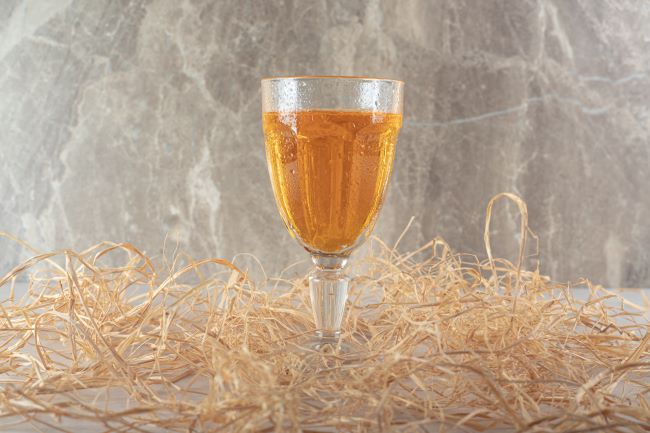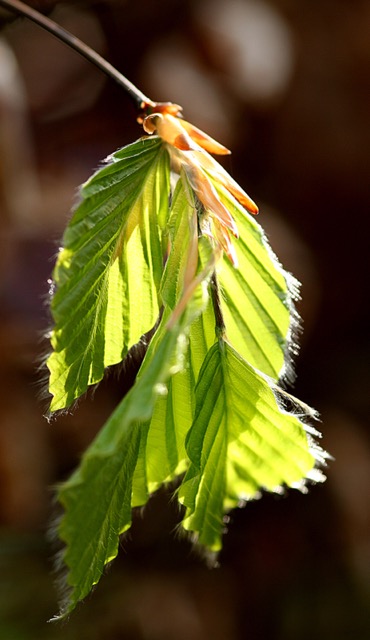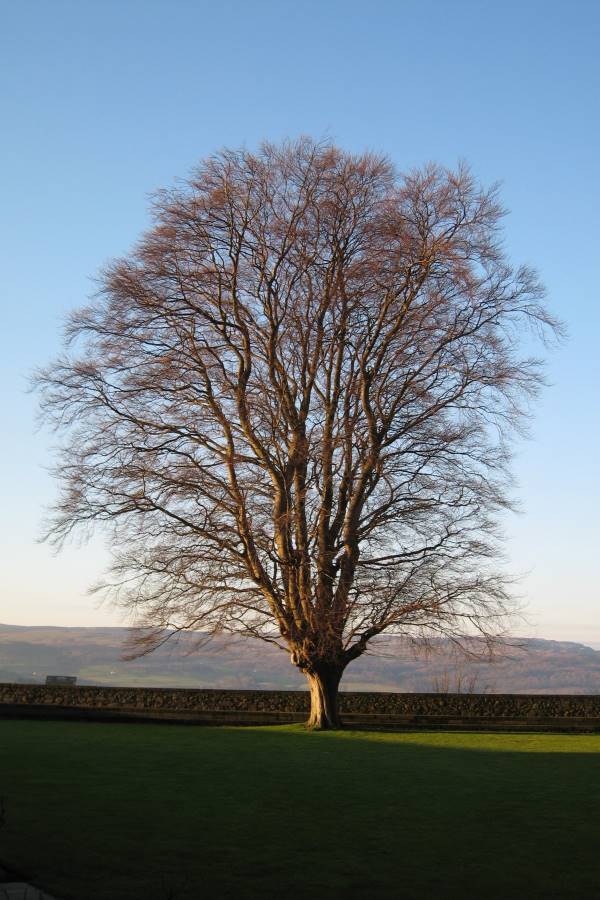Beech leaf noyau
The earliest leaves of the beech tree make a beautifully smooth, sweet and slightly nutty after-dinner drink. You don’t have long to gather the leaves but after that it is plain sailing
Make in Mid spring
Difficulty: Easy

Ingredients
This makes about 750ml if you finish at the "beech infusion" stage or just under double that if you go for the full blown noyau. The recipe here uses less sugar than I would for myself, for the simple reason that it is easy to add some sugar and impossible to remove it afterwards, so play it safe while you figure out your own balance.
- 750ml bottle of gin
- 750ml volume of young beech leaves (enough to loosely fill your 1 litre jar)
- 200g sugar
- 200ml water
- 100ml brandy
This works with any drinkable gin. Your are adding suger and more flavour so an OK dry gin will work well.
Equipment
You will need
- Kilner jar, mason jar or similar
- Sieve
- Funnel
- Bottles enough to hold 1.5 litres
Remember to sterilise the kilner jar and bottles before using them

Method
Harvest the beech leaves
Keep an eye on the beech trees so you can get the leaves just as they start to grow in spring. You will have less than a month’s window.
Collect the very youngest leaves - they should still be sticky and soft, and if you chew on one it should taste a little like citrus or apple.
Very importantly, you do not want to damage the tree. Make sure it’s old enough by the size of its trunk. If you can get both hands round the trunk it is too young and could be damaged. When you find a mature enough tree, collect just a few leaves from each branch leaving plenty for the tree, and don’t leave any bare patches.
Make the infusion
Sterilise the jar, then add the leaves and cover them with gin
Leave the jar in a cool dark place for 3-4 weeks, shaking it every few days
Strain into a large clean bowl or jar, squeeze all the juice out of the leaves and then throw the leaves away
Taste it! Add a mixer and ice and you already have an excellent drink, so feel free to stop here if you want
Finish the noyau
Heat the water to a simmer and stir in the suger until it dissolves. You might need a touch more water so have the kettle handy
Let the sugar syrup cool and add it to the infused gin along with the brandy
Decant the mixture into bottles
Your noyau will be delicious in a few weeks but will benfit enormously if you can leave it for at least 3 months
Troubleshooting
It Isn't Sweet Enough
Just make up a little more of the sugar syrup with some hot water and sugar, and stir it in when you bottle it. Expect this to happen if you follow the exact recipe the first time because it will be a little too dry for most people’s preference
It's Too Sweet
There is no way to remove the suger so your best bet is to give this one away to a sweet-toothed friend. Make a note of the amounts you used and use a touch less sugar next time
Questions and Answers

How Do I Identify A Beech Tree?
Beeches are large 'tree shaped' trees growing up to 40m/130ft tall with a wide half sphere dome of branches. Its mature leaves are dark green wide ovals with a few deep veins coming diagonally from a central stalk. The leaves turn brown in autumn/winter and drop at around the same time as the prickly angular seed cases. Keep an eye on the trees in winter so you can collect the new leaves in spring. They are lime green with silky white hairs and emerge from reddish buds.
If in doubt, take a look in the library for a guide or read through the Woodland Trust’s guide to the beech tree. Don’t confuse the beech with hornbeam (Carpinus betulus) or which looks very similar. Hornbeam trends to lose its leaves over winter whereas beech holds on to its leaves for most of winter. After the leaves have dropped, beech buds are much longer, more narrow, more pointed and more coppery. The new leaves have more silk. Hornbeam isn’t toxic but doesn’t taste great and will not make a drinkable noyau, compared to the clear citrus taste of a young beech leaf. Don’t confuse it with the southern beech Nothofagus either despite its similar name.
Where Can I Find Beech Trees?
Beech is native to southern England, south Wales, and large parts of Europe but it is adaptable as long as the ground is not too wet and the winter not too harsh and it has been introduced widely. It grows through most of England and Wales, and southern Scotland as well as drier parts of Ireland as a result. It was introduced to the USA is naturalised in parts of Australia and New Zealand but don't confuse it with the southern beech Nothofagus which looks similar but is not a relative.
When should I forage for beech leaves?
Forage for the new leaves just as they emerge from their buds. They will be pale lime green with white hairs. This happens in mid Spring, so mid April-May in the northern hemisphere, mid September-October in the southern hemisphere.
